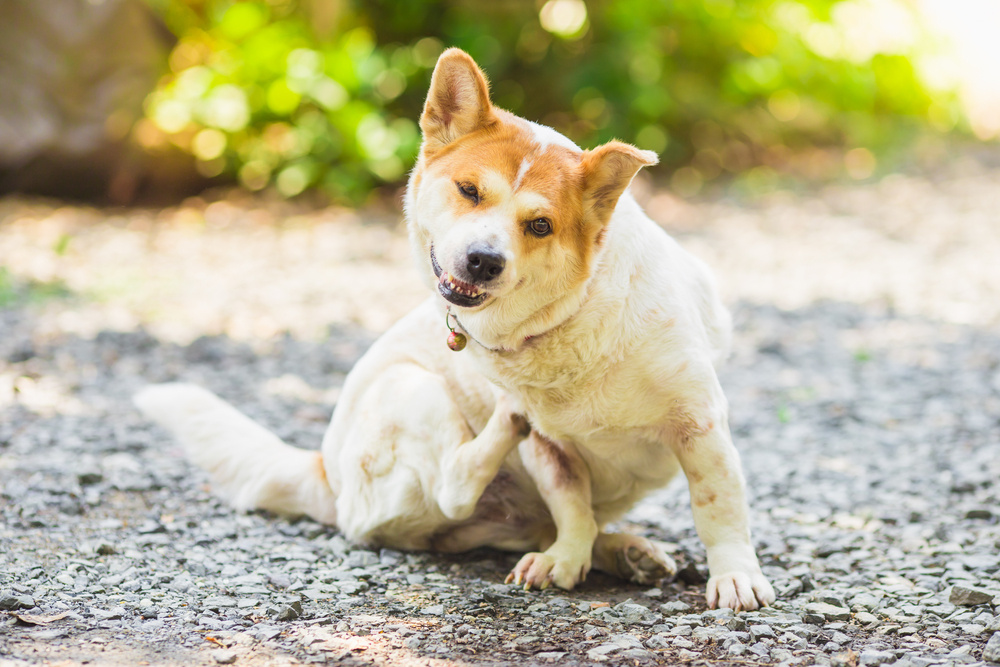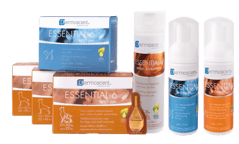
Seborrhea – Dry & Oliy Skin in Pets
If your dog has flaky skin, greasy fur, or an unpleasant odor, they may be dealing with seborrhea—a common skin condition that affects both dogs and, less frequently, cats. While it’s often mistaken for simple dandruff, seborrhea can be a sign of an underlying issue and may lead to ongoing skin discomfort if not addressed.
What Is Seborrhea in Dogs and Cats?
Seborrhea is a condition where the skin produces too much sebum (natural skin oils), leading to flaky, greasy, or scaly skin. It can appear on its own or as a result of another health issue like allergies, hormonal imbalances, or skin infections.
There are two main types:
- Dry seborrhea (seborrhea sicca): Characterized by dandruff, dryness, and flaking.
- Oily seborrhea (seborrhea oleosa): Involves greasy fur, a strong odor, and sometimes thick, inflamed skin.
Common Signs of Seborrhea in Pets
Keep an eye out for these symptoms:
- White flakes or dandruff, especially on the back or flanks
- Greasy, smelly coat, especially around the neck, chest, or ears
- Thickened or crusty skin
- Itching and scratching, especially if allergies are involved
- Darkened or rough skin in chronic cases
- Possible secondary infections on irritated skin
If your pet shows these signs, it’s important to talk to your vet to rule out any underlying issues and find the right skin care routine.
-

Frequent scratching might be a sign on seborrhea
-
.jpg)
Dandruff or flakes of skin in the fur is a common symptom of seborrhea
What Causes Seborrhea?
Seborrhea can be primary (a genetic condition) or secondary, caused by something else affecting the skin.
Primary Seborrhea (less common)
- Usually appears in young animals
- More common in breeds like Cocker Spaniels, West Highland White Terriers, English Springer Spaniels, and Basset Hounds
Secondary Seborrhea (more common)
- Atopic dermatitis or food allergies
- Thyroid or adrenal issues
- Flea infestations or mites
- Skin infections caused by yeast or bacteria
- Poor nutrition or lack of essential fatty acids
- Overbathing with harsh shampoos or exposure to dry air
Managing Seborrhea in Pets
Seborrhea usually requires a multifaceted approach, including:
- Regular use of medicated shampoos or foams to reduce flakes and grease
- Supportive care to hydrate the skin and restore its natural balanc
- Ongoing skin care routines to help maintain healthy skin long-term
- Dietary support (such as omega-3s)
Products to Help Support Pets with Seborrhea
Having the right skin care products at home can make a big difference in helping manage your pet’s symptoms. Here are a few vet-recommended options designed for pets with flaky, oily, or irritated skin:
Zincoseb
...are formulated with zinc gluconate, salicylic acid, and sulfur, Zincoseb helps regulate oil production, reduce flaking, and support a healthy skin barrier. Available in both shampoo and spray for easy application.
Dermoscent® Essential 6 range

...are available as a shampoo, mousse, or spot-on, the Dermoscent Essential 6 range is packed with plant-based ingredients and essential fatty acids to help balance sebum, restore moisture, and improve coat condition. Ideal for regular use.
